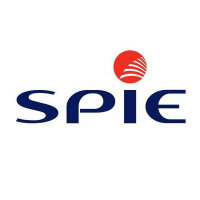
Spie SA
PAR:SPIE


| US |

|
Johnson & Johnson
NYSE:JNJ
|
Pharmaceuticals
|
| US |

|
Berkshire Hathaway Inc
NYSE:BRK.A
|
Financial Services
|
| US |

|
Bank of America Corp
NYSE:BAC
|
Banking
|
| US |

|
Mastercard Inc
NYSE:MA
|
Technology
|
| US |

|
UnitedHealth Group Inc
NYSE:UNH
|
Health Care
|
| US |

|
Exxon Mobil Corp
NYSE:XOM
|
Energy
|
| US |

|
Pfizer Inc
NYSE:PFE
|
Pharmaceuticals
|
| US |

|
Palantir Technologies Inc
NYSE:PLTR
|
Technology
|
| US |

|
Nike Inc
NYSE:NKE
|
Textiles, Apparel & Luxury Goods
|
| US |

|
Visa Inc
NYSE:V
|
Technology
|
| CN |

|
Alibaba Group Holding Ltd
NYSE:BABA
|
Retail
|
| US |

|
3M Co
NYSE:MMM
|
Industrial Conglomerates
|
| US |

|
JPMorgan Chase & Co
NYSE:JPM
|
Banking
|
| US |

|
Coca-Cola Co
NYSE:KO
|
Beverages
|
| US |

|
Walmart Inc
NYSE:WMT
|
Retail
|
| US |

|
Verizon Communications Inc
NYSE:VZ
|
Telecommunication
|
Utilize notes to systematically review your investment decisions. By reflecting on past outcomes, you can discern effective strategies and identify those that underperformed. This continuous feedback loop enables you to adapt and refine your approach, optimizing for future success.
Each note serves as a learning point, offering insights into your decision-making processes. Over time, you'll accumulate a personalized database of knowledge, enhancing your ability to make informed decisions quickly and effectively.
With a comprehensive record of your investment history at your fingertips, you can compare current opportunities against past experiences. This not only bolsters your confidence but also ensures that each decision is grounded in a well-documented rationale.
Do you really want to delete this note?
This action cannot be undone.

| 52 Week Range |
27.46
38.4
|
| Price Target |
|
We'll email you a reminder when the closing price reaches EUR.
Choose the stock you wish to monitor with a price alert.

|
Johnson & Johnson
NYSE:JNJ
|
US |

|
Berkshire Hathaway Inc
NYSE:BRK.A
|
US |

|
Bank of America Corp
NYSE:BAC
|
US |

|
Mastercard Inc
NYSE:MA
|
US |

|
UnitedHealth Group Inc
NYSE:UNH
|
US |

|
Exxon Mobil Corp
NYSE:XOM
|
US |

|
Pfizer Inc
NYSE:PFE
|
US |

|
Palantir Technologies Inc
NYSE:PLTR
|
US |

|
Nike Inc
NYSE:NKE
|
US |

|
Visa Inc
NYSE:V
|
US |

|
Alibaba Group Holding Ltd
NYSE:BABA
|
CN |

|
3M Co
NYSE:MMM
|
US |

|
JPMorgan Chase & Co
NYSE:JPM
|
US |

|
Coca-Cola Co
NYSE:KO
|
US |

|
Walmart Inc
NYSE:WMT
|
US |

|
Verizon Communications Inc
NYSE:VZ
|
US |
This alert will be permanently deleted.
 Spie SA
Spie SA
Spie SA
Investor Relations
Spie SA, a stalwart in Europe's multimodal infrastructure landscape, has woven itself into the fabric of various industries by providing a spectrum of technical solutions and services. Originating from its humble beginnings, Spie has transformed into a juggernaut that facilitates the operation of complex systems across sectors such as energy, telecommunications, and industrial services. Their unique business model revolves around supporting the technology backbone that ensures cities run smoothly, communication stays seamless, and industries operate efficiently. The company thrives by modernizing electrical and mechanical infrastructures, enhancing energy performance, and maintaining critical facilities, proving indispensable in an increasingly integrated world where efficiency and reliability are paramount.
Financially, Spie SA taps into the burgeoning demand for sustainable and smart solutions, making money by executing projects and providing recurring maintenance and operational services. Its core strength is its ability to collaborate across diverse industries, offering bespoke solutions tailored to meet specific client needs. This requires a profound understanding of both client operations and technological advancements. By capitalizing on trends such as digital transformation and energy efficiency, Spie is able to create a steady revenue stream from both long-term contracts and burgeoning projects. Operating in a landscape where the push towards greener and smarter infrastructures is relentless, Spie positions itself not only as a service provider but as an integral partner in its clients' strategic initiatives.

Spie SA, a stalwart in Europe's multimodal infrastructure landscape, has woven itself into the fabric of various industries by providing a spectrum of technical solutions and services. Originating from its humble beginnings, Spie has transformed into a juggernaut that facilitates the operation of complex systems across sectors such as energy, telecommunications, and industrial services. Their unique business model revolves around supporting the technology backbone that ensures cities run smoothly, communication stays seamless, and industries operate efficiently. The company thrives by modernizing electrical and mechanical infrastructures, enhancing energy performance, and maintaining critical facilities, proving indispensable in an increasingly integrated world where efficiency and reliability are paramount.
Financially, Spie SA taps into the burgeoning demand for sustainable and smart solutions, making money by executing projects and providing recurring maintenance and operational services. Its core strength is its ability to collaborate across diverse industries, offering bespoke solutions tailored to meet specific client needs. This requires a profound understanding of both client operations and technological advancements. By capitalizing on trends such as digital transformation and energy efficiency, Spie is able to create a steady revenue stream from both long-term contracts and burgeoning projects. Operating in a landscape where the push towards greener and smarter infrastructures is relentless, Spie positions itself not only as a service provider but as an integral partner in its clients' strategic initiatives.





























 You don't have any saved screeners yet
You don't have any saved screeners yet
